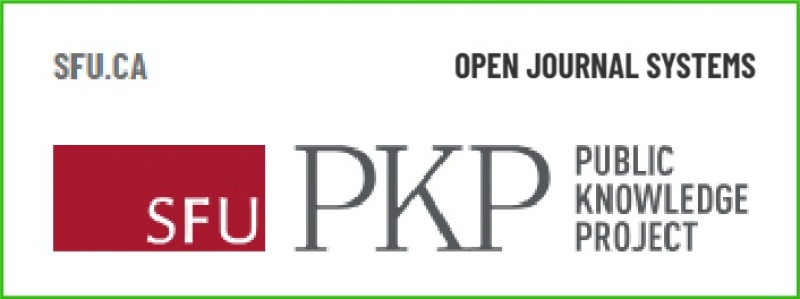Review Literatur: Dampak Perubahan Iklim terhadap Satwa Liar
DOI:
https://doi.org/10.36312/biocaster.v5i3.583Keywords:
Climate Change, Wildlife, Adaptive ConservationAbstract
Climate change is one of the most significant global threats to the survival of wildlife, particularly in tropical regions that harbor high biodiversity yet remain vulnerable to environmental pressures. This study aims to examine the impacts of climate change on the distribution, phenology, behavior, and physiological responses of wildlife through a literature review of 23 scientific articles published between 2015 and 2025. The findings indicate that species with narrow habitat ranges and high sensitivity to temperature are especially vulnerable to climate change, particularly when compounded by anthropogenic disturbances such as deforestation and habitat fragmentation. Various impacts of climate change have been identified in tropical wildlife. Montane forest-endemic birds in the Andes have shifted to higher elevations due to rising temperatures, while Southeast Asian amphibians are threatened by declining microhabitat humidity. Changes in reproductive rhythms are evident in African wild dogs (Lycaon pictus), which have experienced shifts in their birthing seasons. In addition, increased nocturnal activity has been observed in large mammals in Africa and Asia as a response to thermal stress. Adaptive conservation strategies discussed include the establishment of ecological corridors, habitat restoration, and species distribution modeling. A science-based conservation approach is essential to address future ecological challenges.
Downloads
References
Alroy, J. (2017). Effects of habitat disturbance on tropical forest biodiversity. Proceedings of the National Academy of Sciences of the United States of America, 114(23), 6056–6061. https://doi.org/10.1073/pnas.1611855114
Araújo, M. B. (2023). Climate Change and Spatial Conservation Planning. Spatial Conservation Prioritization, April, 172–184. https://doi.org/10.1093/oso/9780199547760.003.0013
Atmoko, T., Sudiono, E., Rifqi, A. M., & Dharma, P. A. (2021). Praktik Terbaik Pengelolaan Habitat Satwa Terancam Punah dalam Skala Bentang Alam. 1–128. https://www.ykan.or.id/content/dam/tnc/nature/en/documents/ykan/buku-dan-jurnal/itp/Praktik-Terbaik-Pengelolaan-Habitat-Satwa-Terancam-Punah-Atmoko-Et-al-2021.pdf
Ceballos, G., Ehrlich, P. R., Barnosky, A. D., García, A., Pringle, R. M., & Palmer, T. M. (2015). Accelerated modern human-induced species losses: Entering the sixth mass extinction. Science Advances, 1(5). https://doi.org/10.1126/sciadv.1400253
Chen, I. C., Hill, J. K., Ohlemüller, R., Roy, D. B., & Thomas, C. D. (2011). Rapid range shifts of species associated with high levels of climate warming. Science, 333(6045), 1024–1026. https://doi.org/10.1126/science.1206432
Core Writing Team, H. L. and J. R. (2023). IPCC, 2023: Summary for Policymakers. In: Climate Change 2023: Synthesis Report. Contribution of Working Groups I, II and III to the Sixth Assessment Report of the Intergovernmental Panel on Climate Change, 1–34.
Fadhilah, Susilawaty, A., Noviana, L., Teristiandi, N., Smarmata, Marulam MT Nugraha, Erick Maisarah, Yunnita Rahim Yunus, A. T., Pahlevi, Reza Shah Gusri, L., & Delly, J. (2016). Ekologi dan Manajemen Lingkungan.
Freeman, B. G., Scholer, M. N., Ruiz-gutierrez, V., & Fitzpatrick, J. W. (2018). Climate change causes upslope shifts and mountaintop extirpations in a tropical bird community. https://doi.org/10.1073/pnas.1804224115
Frey, S., Fisher, J. T., Burton, A. C., & Volpe, J. P. (2017). Investigating animal activity patterns and temporal niche partitioning using camera-trap data: challenges and opportunities. Remote Sensing in Ecology and Conservation, 3(3), 123–132. https://doi.org/10.1002/rse2.60
Kim, A. Y., Lee, W. S., & Son, Y. (2024). The Interaction between Climate Change and Biodiversity Can Be Assessed from a Material Cycle Perspective. Diversity, 16(8). https://doi.org/10.3390/d16080506
Lenoir, J., Bertrand, R., Comte, L., Bourgeaud, L., Hattab, T., Murienne, J., & Grenouillet, G. (2020). Species better track climate warming in the oceans than on land. Nature Ecology and Evolution, 4(8), 1044–1059. https://doi.org/10.1038/s41559-020-1198-2
Massarelli, C. (2024). Developing a Calculation Workflow for Designing and Monitoring Urban Ecological Corridors: A Case Study. Urban Science, 8(4). https://doi.org/10.3390/urbansci8040169
McWhorter, T. J., Gerson, A. R., Talbot, W. A., Smith, E. K., McKechnie, A. E., & Wolf, B. O. (2018). Avian thermoregulation in the heat: Evaporative cooling capacity and thermal tolerance in two Australian parrots. Journal of Experimental Biology, 221(6). https://doi.org/10.1242/jeb.168930
Pacifici, M., Foden, W. B., Visconti, P., Watson, J. E. M., Butchart, S. H. M., Kovacs, K. M., Scheffers, B. R., Hole, D. G., Martin, T. G., Akçakaya, H. R., Corlett, R. T., Huntley, B., Bickford, D., Carr, J. A., Hoffmann, A. A., Midgley, G. F., Pearce-Kelly, P., Pearson, R. G., Williams, S. E., … Rondinini, C. (2015). Assessing species vulnerability to climate change. Nature Climate Change, 5(3), 215–225. https://doi.org/10.1038/nclimate2448
Pecl, G. T., Araújo, M. B., Bell, J. D., Blanchard, J., Bonebrake, T. C., Chen, I. C., Clark, T. D., Colwell, R. K., Danielsen, F., Evengård, B., Falconi, L., Ferrier, S., Frusher, S., Garcia, R. A., Griffis, R. B., Hobday, A. J., Janion-Scheepers, C., Jarzyna, M. A., Jennings, S., … Williams, S. E. (2017). Biodiversity redistribution under climate change: Impacts on ecosystems and human well-being. Science, 355(6332). https://doi.org/10.1126/science.aai9214
Pelissie, M., Johansson, F., & Hyseni, C. (2022). Pushed Northward by Climate Change: Range Shifts With a Chance of Co-occurrence Reshuffling in the Forecast for Northern European Odonates. Environmental Entomology, 51(5), 910–921. https://doi.org/10.1093/ee/nvac056
Pollock, H. S., Brawn, J. D., & Cheviron, Z. A. (2021). Heat tolerances of temperate and tropical birds and their implications for susceptibility to climate warming. Functional Ecology, 35(1), 93–104. https://doi.org/10.1111/1365-2435.13693
Safnowandi, S. (2021). Struktur Komunitas Mangrove di Pesisir Pantai Cemara Selatan Kabupaten Lombok Barat sebagai Bahan Penyusunan Modul Ekologi. Bioma: Jurnal Biologi dan Pembelajarannya, 3(1), 60-71. https://doi.org/10.31605/bioma.v3i1.1030
Scheffers, B. R., De Meester, L., Bridge, T. C. L., Hoffmann, A. A., Pandolfi, J. M., Corlett, R. T., Butchart, S. H. M., Pearce-Kelly, P., Kovacs, K. M., Dudgeon, D., Pacifici, M., Rondinini, C., Foden, W. B., Martin, T. G., Mora, C., Bickford, D., & Watson, J. E. M. (2016). The broad footprint of climate change from genes to biomes to people. Science, 354(6313). https://doi.org/10.1126/science.aaf7671
Shaffer, L. J., Khadka, K. K., Van Den Hoek, J., & Naithani, K. J. (2019). Human-elephant conflict: A review of current management strategies and future directions. Frontiers in Ecology and Evolution, 6(JAN), 1–12. https://doi.org/10.3389/fevo.2018.00235
Trisos, C. H., Merow, C., & Pigot, A. L. (2020). The projected timing of abrupt ecological disruption from climate change. Nature, 580(7804), 496–501. https://doi.org/10.1038/s41586-020-2189-9
van de Ven, T. M. F. N., McKechnie, A. E., & Cunningham, S. J. (2019). The costs of keeping cool: behavioural trade-offs between foraging and thermoregulation are associated with significant mass losses in an arid-zone bird. Oecologia, 191(1), 205–215. https://doi.org/10.1007/s00442-019-04486-x
Wiens, J. J. (2016). Climate-Related Local Extinctions Are Already Widespread among Plant and Animal Species. PLoS Biology, 14(12), 1–18. https://doi.org/10.1371/journal.pbio.2001104
Zeng, Y. (2016). The impact of climate change on wildlife in East Africa. None, 11(7), 58–60. https://doi.org/10.37421/2332-2543.2023.11.478
Downloads
Published
How to Cite
Issue
Section
License
Copyright (c) 2025 Sundari Marsudi, Dayun Ifanda, Hardiansyah Tambunan, Hanna Tresia Silalahi, & Dela Arinda

This work is licensed under a Creative Commons Attribution-ShareAlike 4.0 International License.
-
Attribution — You must give appropriate credit, provide a link to the license, and indicate if changes were made. You may do so in any reasonable manner, but not in any way that suggests the licensor endorses you or your use.
-
ShareAlike — If you remix, transform, or build upon the material, you must distribute your contributions under the same license as the original.










































